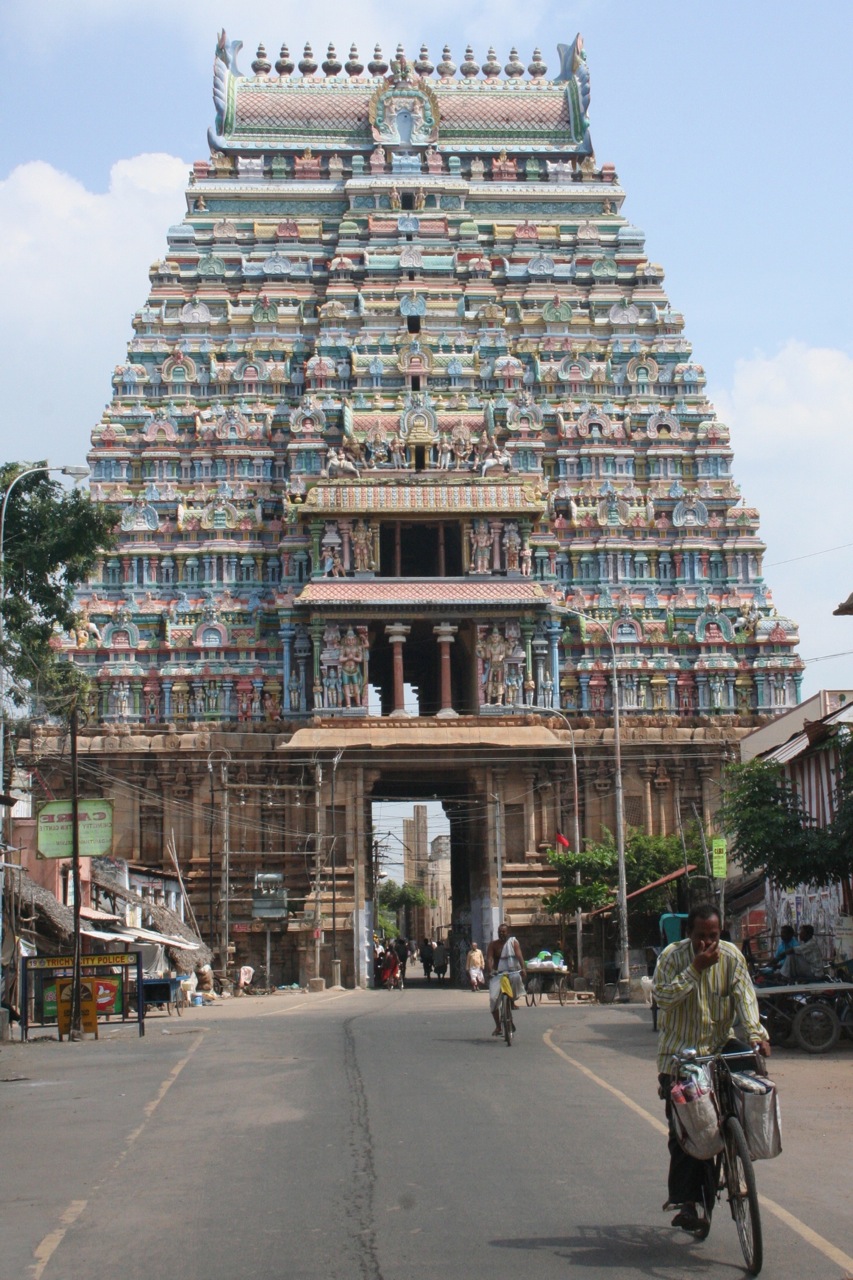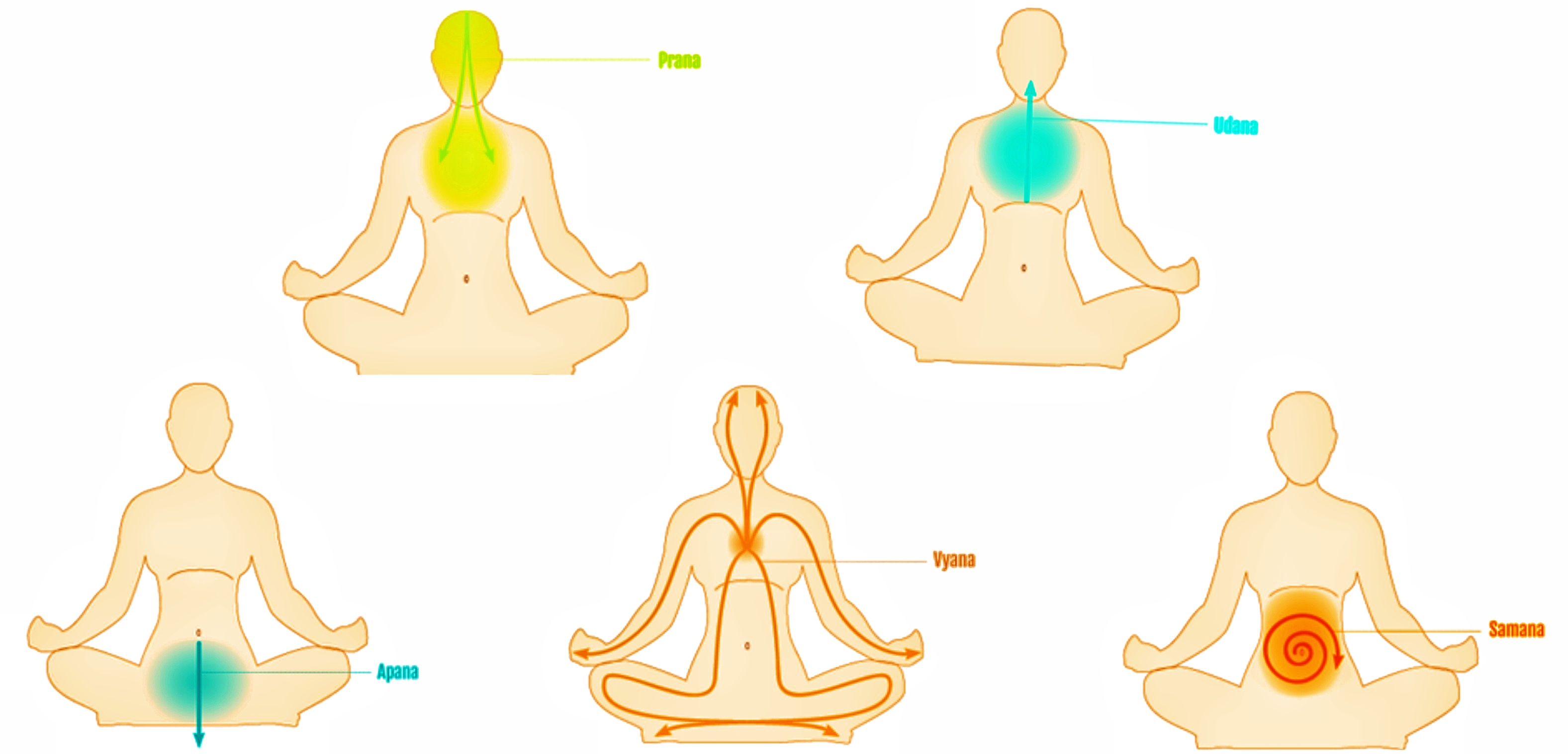|
Prakara
A prakaram (प्राकारः in Sanskrit), also spelled pragaram or pragaaram) in Indian architecture is an outer part around the Hindu temple sanctum. They may be enclosed or open and are typically enclosed for the innermost prakaram. As per Hindu religious practices, devotees start to come around the outer prakarams to the inner most before entering the sanctum. Most of the historic South Indian cities like Madurai, Srirangam, Sirkali, Thiruvarur and Chidambaram were built around large temples in the center of the city. The streets of the city act as extension of the prakarams of the temple. Ramanathaswamy Temple has outer set of corridors and is reputed to be the longest prakaram in the world. Temple architecture In the Hindu temple, the prakaram is the temple compound around the sanctum. Typically a Hindu temple prayer hall is generally built in front of the temple's sanctum sanctorum (garbhagriha). Usually large Hindu temples have one or more prakarams. The Praka ... [...More Info...] [...Related Items...] OR: [Wikipedia] [Google] [Baidu] |
Srirangam
Srirangam is a neighbourhood in the city of Tiruchirappalli in the Indian state of Tamil Nadu. A river island, Srirangam is bounded by the Kaveri River on one side and its distributary Kollidam on the other side. Considered as the first among the 108 Divya Desams, a group of Vishnu temples, it is famous for the Ranganathaswamy Temple, the largest temple complex in India and the biggest functioning Hindu temple in the world. Srirangam is also home to a significant population of Sri Vaishnavas (followers of Lakshmi and Vishnu). Etymology Old Tamil literature refers to the place as Tiruvarangam. The name owes itself to the legend that once the holy vimana (Sriranga Vimana) of Vishnu, which is believed to have become stranded at this place. An isle lying in the midst of the winding branches of a river is called ''arangam'' in Tamil. Thus, the spot came to be known as Srirangam in Sanskrit ("Shri-Rangam") and Tiruvarangam (Thiru + Arangam = Thiruvarangam) in Tamil. "Shri" ... [...More Info...] [...Related Items...] OR: [Wikipedia] [Google] [Baidu] |
Madurai
Madurai ( , , ), formerly known as Madura, is a major city in the States and union territories of India, Indian state of Tamil Nadu. It is the cultural capital of Tamil Nadu and the administrative headquarters of Madurai District, which is governed by the Madurai Municipal Corporation established on 1 November 1866. As of the 2011 Census of India, 2011 census, it is the List of cities in India by population, third largest metropolis in Tamil Nadu after Chennai and Coimbatore in terms of population and 27th largest List of million-plus urban agglomerations in India, urban agglomeration in India. Located on the banks of River Vaigai, Madurai has been a major settlement for two millennia and has a documented history of more than 2500 years. It is often referred to as "Thoongatha Nagaram", meaning "the city that never sleeps". Madurai is closely associated with the Tamil language. The third Tamil Sangam, a major congregation of Tamil scholars, is said to have been held in the ci ... [...More Info...] [...Related Items...] OR: [Wikipedia] [Google] [Baidu] |
ACCESS
Access may refer to: Companies and organizations * ACCESS (Australia), an Australian youth network * Access (credit card), a former credit card in the United Kingdom * Access Co., a Japanese software company * Access International Advisors, a hedge fund * AirCraft Casualty Emotional Support Services * Arab Community Center for Economic and Social Services * Access, the Alphabet division containing Google Fiber * Access, the Southwest Ohio Regional Transit Authority's paratransit service Sailing * Access 2.3, a sailing keelboat * Access 303, a sailing keelboat * Access Liberty, a sailing keelboat Television * ''Access Hollywood'', formerly ''Access'', an American entertainment newsmagazine * Access (British TV programme), ''Access'' (British TV programme), a British entertainment television programme * Access (Canadian TV series), ''Access'' (Canadian TV series), a Canadian television series (1974–1982) * Access TV, a former Canadian educational television channel (1973–2011) ... [...More Info...] [...Related Items...] OR: [Wikipedia] [Google] [Baidu] |
Sanctum Sanctorum
The Latin phrase ''sanctum sanctorum'' is a translation of the Hebrew term ''קֹדֶשׁ הַקֳּדָשִׁים'' (Qṓḏeš HaQŏḏāšîm), literally meaning Holy of Holies, in Latin texts, this generally refers to the holiest place of the Ancient Israelites, inside the Tabernacle and later inside the Temple in Jerusalem. However, the term also has some derivative use in application to imitations of the Tabernacle in church architecture. The plural form ''sancta sanctorum'' is also used, arguably as a synecdoche, referring to the holy relics in the sanctuary. The Vulgate translation of the Bible uses ''sancta sanctorum'' for the Holy of Holies. Hence, the derivative usage denotes the Sancta Sanctorum chapel in the complex of the Archbasilica of Saint John Lateran, Rome. In Hinduism, the innermost part of a temple, where the deity's '' Murti'' is kept, forms the '' Garbhagriha'', also known as a sanctum sanctorum. Etymology The Latin word '' sanctum'' is the neuter f ... [...More Info...] [...Related Items...] OR: [Wikipedia] [Google] [Baidu] |
Prana
In yoga, Ayurveda, and Indian martial arts, prana (, ; the Sanskrit word for breath, " life force", or "vital principle") permeates reality on all levels including inanimate objects. In Hindu literature, prāṇa is sometimes described as originating from the Sun and connecting the elements. Five types of prāṇa, collectively known as the five '' vāyus'' ("winds"), are described in Hindu texts. Ayurveda, tantra and Tibetan medicine all describe ''prāṇa vāyu'' as the basic vāyu from which the other vāyus arise. Prana is divided into ten main functions: The five Pranas – Prana, Apana, Udana, Vyana and Samana – and the five Upa-Pranas – Naga, Kurma, Devadatta, Krikala and Dhananjaya. Pranayama, one of the eight limbs of yoga, is intended to expand conscious awareness of prana. Etymology V.S. Apte provides fourteen different meanings for the Sanskrit word ' () including breath or respiration; the breath of life, vital air, principle of life (usually plural ... [...More Info...] [...Related Items...] OR: [Wikipedia] [Google] [Baidu] |
Pranamaya
In yoga, Ayurveda, and Indian martial arts, prana (, ; the Sanskrit word for breath, " life force", or "vital principle") permeates reality on all levels including inanimate objects. In Hindu literature, prāṇa is sometimes described as originating from the Sun and connecting the elements. Five types of prāṇa, collectively known as the five ''vāyus'' ("winds"), are described in Hindu texts. Ayurveda, tantra and Tibetan medicine all describe ''prāṇa vāyu'' as the basic vāyu from which the other vāyus arise. Prana is divided into ten main functions: The five Pranas – Prana, Apana, Udana, Vyana and Samana – and the five Upa-Pranas – Naga, Kurma, Devadatta, Krikala and Dhananjaya. Pranayama, one of the eight limbs of yoga, is intended to expand conscious awareness of prana. Etymology V.S. Apte provides fourteen different meanings for the Sanskrit word ' () including breath or respiration; the breath of life, vital air, principle of life (usually plural in thi ... [...More Info...] [...Related Items...] OR: [Wikipedia] [Google] [Baidu] |
Kosha
A ''kosha'' (also ''kosa''; Sanskrit :wikt:कोश, कोश, IAST: ), usually rendered "sheath", is a covering of the ''Atman (Hinduism), Atman'', or Self according to Vedantic philosophy. The five sheaths, summarised with the term Panchakosha, are described in the ''Taittiriya Upanishad'' (2.1-5), and they are often visualised as the layers of an onion. From gross to fine they are: # ''Annamaya kosha'', "food" sheath (Anna), the physical body; # ''Pranamaya kosha'', "energy" sheath (Prana), the vital principle; # ''Manomaya kosha'' "mind" sheath (Manas), the mind and the five senses; # ''Vijnanamaya kosha, Vijñānamaya kosha'', "discernment" or "Knowledge" sheath (Vijnana, Vigynana) # ''Anandamaya kosha'', "bliss" sheath (wikt:bliss, Ananda) Origins The five sheaths summarised with the term Panchakosha are described in the ''Taittiriya Upanishad'' (2.1-5). ''Panchakoshas'' are divided in three bodies: * The gross body ''sthula sarira'' - made up of physical matter. Thi ... [...More Info...] [...Related Items...] OR: [Wikipedia] [Google] [Baidu] |
Garbhagriha
A ''garbhagriha'' () is the innermost sanctuary of Hindu and Jain temples, often referred to as the "holy of holies" or " sanctum sanctorum". The term ''garbhagriha'' (literally, "womb chamber") comes from the Sanskrit words ''garbha'' for womb and ''griha'' for house. Although the term is often associated with Hindu temples, it is also found in Jain and Buddhist temples. The garbhagriha is the location of the ''murti'' (sacred image) of the temple's primary deity. This might be a murti of Shiva, as the lingam, his consort the Goddess in her consecrated image or yoni symbol, Vishnu or his spouse, or some other god in symbol or image. In the Rajarani temple in Bhubaneswar, near Puri, there is no symbol in that lightless garbhagriha. Architecture A garbhagriha started with a circular architecture like at Gudimellam temple (3rd century BCE). Later it evolved as a square (though there are exceptions), sits on a plinth, and is also at least approximately a cube. Compared ... [...More Info...] [...Related Items...] OR: [Wikipedia] [Google] [Baidu] |
Chidambaram
Chidambaram is a major town and municipality in Cuddalore district in the Indian state of Tamil Nadu, on the banks of the Vellar River where it meets the Bay of Bengal. It is the headquarters of the Chidambaram taluk. The town is believed to be of significant antiquity and has been ruled, at different times, by the Pallavas until ninth century, Medieval Cholas, Later Cholas, Later Pandyas, Vijayanagara Empire, Thanjavur Nayakas, Marathas and the British. The town is known for the Thillai Nataraja Temple and Thillai Kali Temple, and the annual chariot festival held in the months of December–January (In the Tamil month of Marghazhi known as "Margazhi Urchavam") and June to July (In the Tamil month of Aani known as "Aani Thirumanjanam"). One of the Divya Desams Divya Sri Govindaraja Perumal Temple (Thiruchitrakoodam) is a part of Thillai Nataraja Temple complex. Thiruvetkalam Shiva Temple, Vadakiruppu, Thirunelvayil Shiva Temple, Sivapuri and Tirukkazhippalai Palvannan ... [...More Info...] [...Related Items...] OR: [Wikipedia] [Google] [Baidu] |





